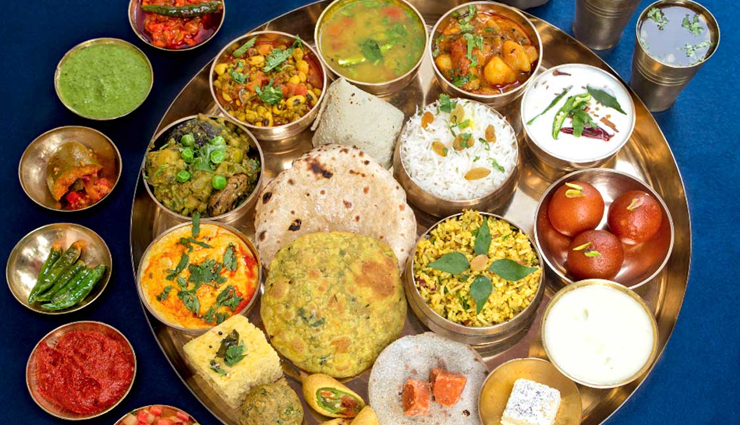Introduction
Dining out has become a frequent social activity in today’s fast-paced society. However, with the growing demand for dining experiences, clients are more concerned about waiting for a seat at a restaurant. This is when food apps for table reservations and food app development come in handy. These applications have transformed the way we eat by making it easy to reserve a table ahead of time, therefore improving the whole eating experience. We will look at the growth of food apps for table reservations, their benefits, popular features, and the influence they have on the restaurant sector and consumer happiness in this blog article.
1. The Evolution of Food Apps for Table Reservation
Since their introduction, food apps for table reservations have gone a long way. Initially, booking a table required a phone call to the restaurant, which sometimes resulted in long wait times or lost reservations owing to communication breakdowns. As technology advanced, new online platforms and smartphone applications arose, altering the way we book and manage bookings.
a) Early Online Reservation Systems
The development of online reservation systems on restaurant websites was the first wave of digital innovation. Customers may go to a restaurant’s website, pick a day and time, and reserve a table. While this was an improvement, it lacked the convenience and ease of use that contemporary meal applications provide.
b) Integration of Food Apps
As specialized food applications appeared, users could smoothly explore numerous restaurants, examine menus, check reviews, and make appointments. These applications became a one-stop shop for consumers, offering a full eating experience in the digital domain.
2. Benefits of Food Apps for Table Reservation
a) Convenience
Food apps make it simple to reserve a table at your favorite restaurant. With a few clicks on their cellphones, users can browse among several restaurants, choose their preferred time window, and make a reservation.
b) Time-saving
The days of standing in huge lines or being placed on hold during a phone call to reserve a table are over. Food apps save consumers time and effort by allowing them to instantly check for table availability and make a reservation without wait.
c) Real-time Updates
Food applications provide real-time table availability updates, ensuring that consumers have up-to-date information at their fingertips. This minimizes any confusion or disappointment when you arrive at the restaurant.
d) Access to Reviews and Ratings
Food applications allow users to browse restaurant reviews and ratings, allowing them to make more educated selections about where to eat. This improves the whole eating experience by allowing consumers to select the best-suited solution.
3. Popular Features of Food Apps for Table Reservation
a) Search and Filter Options
Food applications allow you to search and filter alternatives based on geography, cuisine, price range, and other factors. Users may filter down their options to select the ideal eating location.
b) Reservation Management
Users can change their bookings by changing the date or time, canceling them, or rescheduling them. This feature provides consumers with freedom.
c) Push Notifications
Push notifications are sent by food applications to remind users of their reservations, lowering the odds of forgetting or missing a reservation.
d) Integration with Maps
Integration with mapping systems allows consumers to quickly locate the restaurant and plan their travel.
4. Impact on the Restaurant Industry
a) Efficient Table Management
Food applications assist restaurants in more efficiently managing their tables by offering data about reservation trends. This enables for improved resource planning and usage.
b) Enhanced Customer Reach
Restaurants may reach a larger audience by using food apps. To attract more customers, they should highlight their services, ambience, and client feedback.
c) Improved Customer Satisfaction
Food applications help to increase client satisfaction by providing a streamlined reservation experience. Customers like the ease and efficiency given by these applications, which leads to repeat business and excellent feedback.
5. Challenges and Future Trends
a) Challenges
Despite their obvious advantages, culinary applications for table reservations confront a number of problems. One of the major challenges is guaranteeing a consistent user experience. To attract and maintain users, apps must be user-friendly, with simple interfaces. Managing a massive amount of real-time data, such as bookings and restaurant availability, is also a technological difficulty.
Dealing with last-minute cancellations or no-shows is another difficulty. This has the ability to interrupt the restaurant’s operations and result in revenue loss. App developers are often challenged to strike a balance between user flexibility and discouraging no-shows.
b) Future Trends
The future of food applications for table reservations is bright, with numerous upcoming technologies ready to significantly improve the dining experience.
– Artificial Intelligence (AI) Integration: AI may assess user preferences and previous eating experiences to offer tailored restaurant selections. It may help optimize table availability and recommend appropriate meal times.
– Virtual Reality (VR) and Augmented Reality (AR): VR and AR integration can provide virtual restaurant tours, allowing consumers to experience the atmosphere, cuisine, and general feel before booking a reservation.
– Blockchain for Transparency and Security: Blockchain technology can improve transaction security and transparency, creating trust in users regarding their reservations and payments.
– Integration with Smart Devices: Food applications may interact with smart home technologies, allowing customers to make reservations using voice commands or other smart devices, further streamlining the process.
6. Impact on Local and Small Businesses
Local and small restaurants benefit greatly from food apps, which provide them with a platform to compete with larger companies. These applications level the playing field by allowing small businesses to exhibit their unique offers, attract a larger consumer base, and increase their exposure in the digital world. This exposure has the potential to enhance foot traffic, profitability, and sustainability for local companies.
Conclusion
Food applications for table reservations have transformed the dining experience, making it more convenient, efficient, and pleasurable. These apps have gone a long way from their humble beginnings as online reservation systems to the sophisticated, feature-rich applications of today. They have not only streamlined the reservation procedure for consumers, but they have also played an important part in the restaurant industry’s development and sustainability. As technology advances, the future of food applications for table reservations contains even more exciting possibilities, guaranteeing a better eating experience for everyone.



